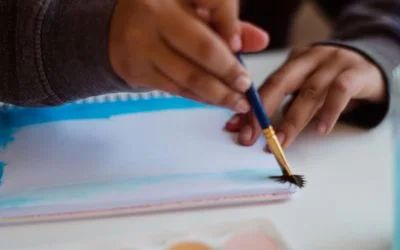Have you ever found yourself buried under a mountain of notes, textbooks sprawled across the desk, and digital files scattered in the abyss of your computer folders?
If that scene seems familiar, then you, my friend, are in for a treat.
Because today, we’re going to transform your study space into a haven of organization and efficiency.
Let’s face it, studying can be not so fun sometimes But what if I told you that with a few simple tweaks, you’ll have an organized learning space?
Let’s dive into the world of organized study spaces, shall we?
Organize Physically and Digitally: The Dual Frontiers
Why It’s Crucial: You see, our brains mirror our surroundings. A cluttered space equals a cluttered mind. The solution is very simple
-
- Physical Organization: Start with your physical space. Group your textbooks and notes by subject. Use shelves, boxes, or even color-coded folders. The key is to have a specific place for everything.
-
- Digital Organization: In our digital age, organizing your virtual study materials is just as important. Create subject-wise folders on your computer. Bookmark important websites. And, dear students, let’s not forget the holy grail of digital organization – cloud storage, use it.
Highlight, But Don’t Over Highlight: The Art of Color Coding
The Common Trap: We’ve all been there, highlighter in hand, zealously marking every other sentence until our notes resemble a psychedelic piece of art. But here’s a secret – effective highlighting is more about what you don’t highlight.
-
- Be Selective: Only highlight key concepts or definitions. Think of it as creating signposts in your notes that guide you to the most important information.
-
- Color Coding: Use different colors for different types of information. For example, use yellow for definitions, blue for examples, and green for important dates. This not only makes your notes visually appealing but also helps in quicker revision.
Regular Clean-Up: The Weekly Ritual
Why you should do it?: Regularly cleaning your study space is like hitting the reset button. It not only keeps your space tidy but also helps in maintaining a clear, focused mind.
-
- Set a Schedule: Pick a day each week for a thorough clean-up. This could be organizing your notes, clearing your desk, or decluttering your computer desktop.
-
- Stay Consistent: Consistency is key. Make this clean-up ritual a non-negotiable part of your week. Trust me, the peace of mind it brings is worth every minute.

Alright, so how do you make these strategies a part of your everyday life? Here are a few tips:
- Start Small: Don’t try to overhaul everything in one day. Start with one area of your space and gradually extend it to others.
- Make It Fun: Put on some music, set a timer, and challenge yourself to organize as much as you can before it rings. Who says organizing can’t be fun?
- Seek Inspiration: Sometimes, a little inspiration goes a long way. Look up study space organization ideas online, or check out how your classmates keep their spaces tidy.
- Reward Yourself: After a successful clean-up, reward yourself. Maybe it’s a walk in the beautiful gardens of Mardan or a small treat. You’ve earned it!
So, dear students of Mardan and KPK, remember that a clutter-free space is more than just an aesthetic choice. It’s a stepping stone towards a more focused, efficient, and ultimately successful learning experience.
As you embark on this journey of organization, remind yourself that every little step counts. A tidy desk here, a sorted folder there, and voilà – you’re on your way to becoming a more organized, more effective learner.
Now, over to you – how do you plan to start decluttering your space? Share your thoughts and let’s inspire each other towards a journey of organized learning!



0 Comments